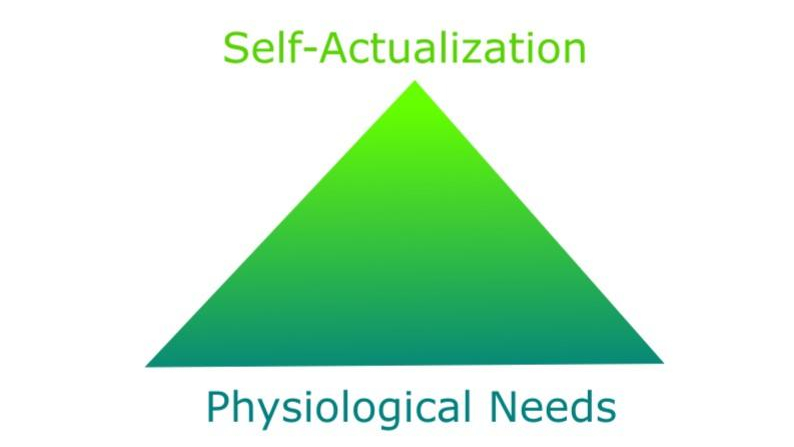Hierarchy of needs by Maslow

Maslow's Hierarchy of Needs is a psychological theory proposed by Abraham Maslow in 1943, which posits that human needs can be organized into a hierarchical structure. This hierarchy suggests that lower-level needs must be satisfied before individuals can progress to higher-level needs. The hierarchy is typically depicted as a pyramid with five levels:
Physiological Needs: At the base of the pyramid are physiological needs such as food, water, shelter, and sleep. These basic needs must be met for survival and form the foundation upon which higher-level needs can be addressed.
Safety Needs: Once physiological needs are reasonably satisfied, individuals seek security and safety. This includes physical safety (e.g., job security, health), financial security (e.g., stable income), and environmental safety (e.g., safe working conditions).
Social Needs: With safety assured, individuals move on to social needs, which include the desire for belongingness, acceptance, and meaningful relationships with others. These needs are fulfilled through friendships, family relationships, and community involvement.
Esteem Needs: Higher up the hierarchy are esteem needs, which Maslow categorized into two types:
- Esteem from Others: Recognition, respect, and appreciation from others.
- Self-Esteem: Confidence, self-respect, and a sense of achievement derived from personal accomplishments.
Self-Actualization: At the pinnacle of Maslow's pyramid is self-actualization, representing the realization of one's full potential and personal growth. This involves pursuing creative activities, personal development, and achieving a sense of fulfillment in life.
Application in Organizational Contexts
In organizational settings, Maslow's Hierarchy of Needs is often used to understand employee motivation, satisfaction, and engagement:
Human Resource Management: HR professionals apply Maslow's theory to design compensation packages, benefits, and work environments that meet employees' needs across different levels of the hierarchy. This helps in attracting and retaining talent by addressing both tangible (e.g., salary, job security) and intangible (e.g., recognition, career development) needs.
Leadership and Team Dynamics: Managers and leaders use the hierarchy to foster a supportive workplace culture that values teamwork, collaboration, and open communication. By addressing social needs and providing opportunities for esteem and self-actualization, leaders can cultivate a motivated and productive workforce.
Employee Engagement and Satisfaction: Understanding where employees are situated in the hierarchy helps in tailoring engagement strategies. For instance, providing training and development opportunities can satisfy esteem needs, while fostering a sense of community and belonging can address social needs.
Criticisms and Limitations
While Maslow's theory provides a valuable framework for understanding human motivation, it has been criticized for its rigidity and the assumption that needs must be satisfied in a strict hierarchical order. In reality, individuals may prioritize and pursue needs differently based on personal values, cultural influences, and situational factors.
Maslow's Hierarchy of Needs remains a foundational theory in psychology and organizational behavior, offering insights into human motivation and behavior within organizational contexts. By recognizing and addressing employees' diverse needs, organizations can foster a supportive work environment that promotes employee well-being, satisfaction, and organizational success.

